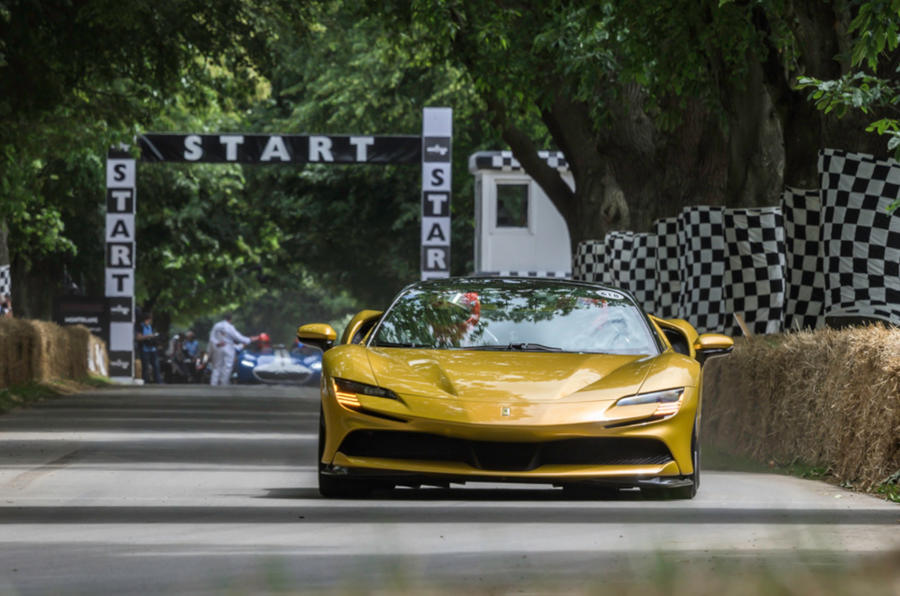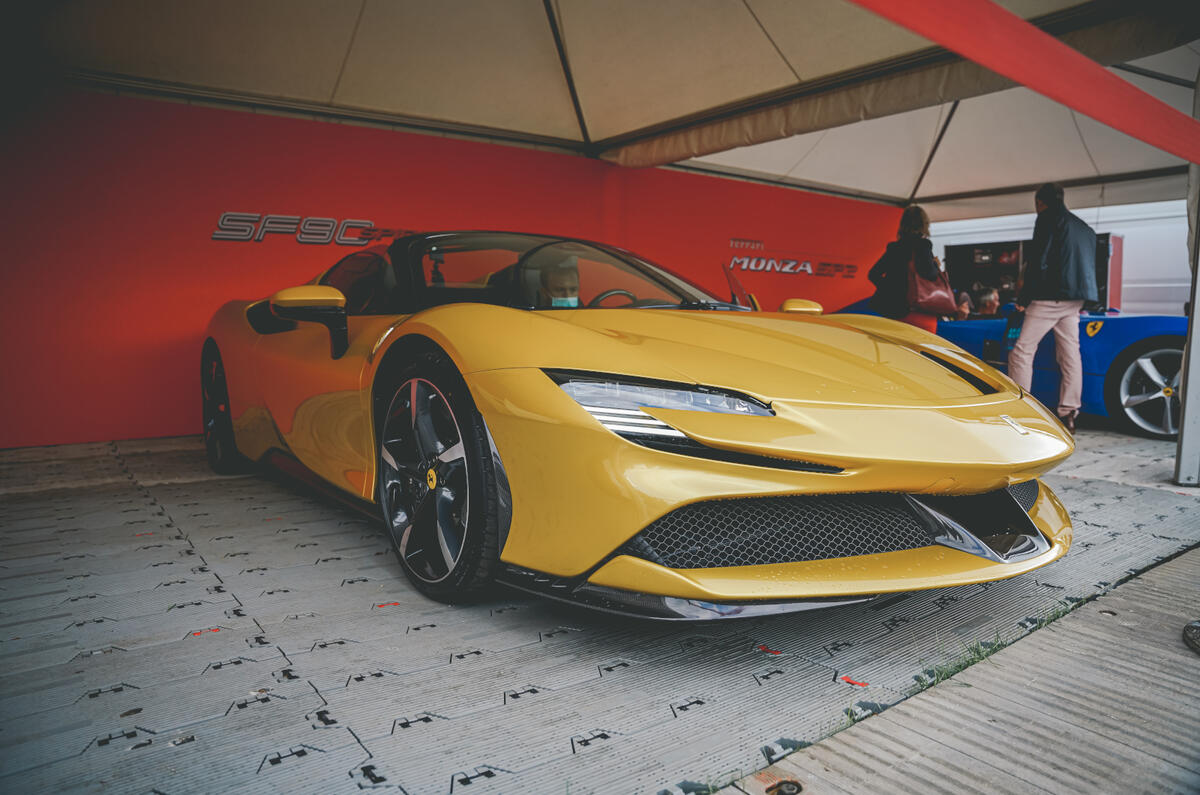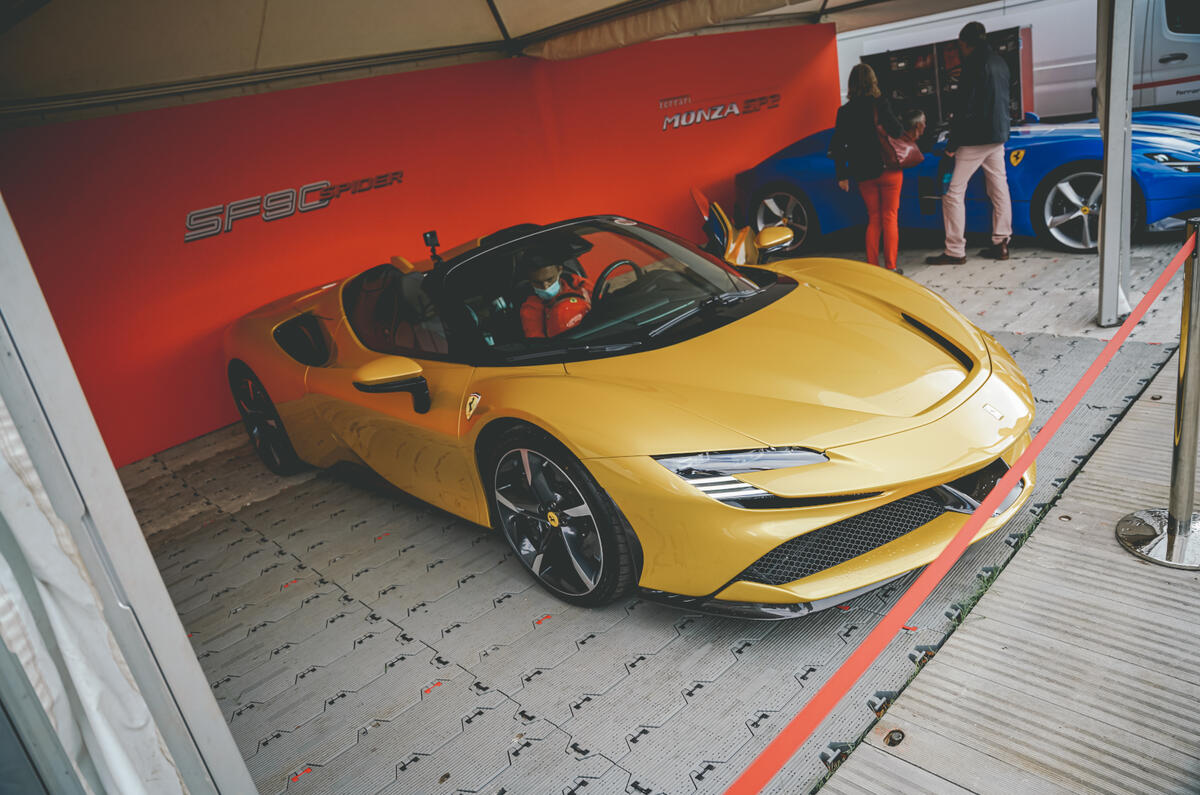Ferrari has presented the new SF90 Spider at Goodwood as the most powerful series-production convertible in the world, claiming the title from its own 812 GTS.
Making its debut 18 months after the SF90 Stradale was unwrapped, the Spider is Ferrari's second hybrid convertible, following the 2017 LaFerrari Aperta, and is claimed to offer the same "record-breaking performance" as the hard-top while bringing "further driving pleasure and versatility to the mix". Customer deliveries are set to get underway in the second quarter of 2021, with prices in its Italian home market starting at €473,000 (£425,000).
The Stradale's four-wheel-drive plug-in powertrain is carried over wholesale, meaning the Spider's 769bhp twin-turbocharged 4.0-litre V8 is mated to a pair of electric motors on the front axle and one at the rear. Combined, the electric units produce 217bhp and contribute to an overall power output of 986bhp and 664lb ft of torque. Power is sent to all four wheels via an eight-speed dual-clutch gearbox.
The SF90 Spider matches the Stradale's 2.5sec 0-62mph sprint time and falls short of that car's 212mph top speed by just 1mph. More significantly, the convertible has posted a lap time of 1min 19.5sec at Ferrari's Fiorano test track - just 0.5sec behind the hard-top and 0.2sec quicker than even the fixed-roof LaFerrari.
Technically the second Ferrari model to be capable of electric-only running, the SF90 Spider's 7.9kWh battery allows it to be driven with the petrol engine off for up to 15.5 miles.
Like all convertible Ferraris of the modern era, the Spider features an aluminium retractable hard-top, which opens and closes in just 14 seconds and is said to save 40kg and require at least 50 litres less storage space compared with a conventional system. The rear windscreen can be raised or lowered when the roof is retracted to alter wind buffeting at high speed.






































Join the debate
Add your comment
Best not mention...
... the lack of luggage space which renders the car useless for any sort of trip. Luggage space is good in the 488 GTB, reduced in the F8 Tributo and almost eliminated in the SF90 Stradale.
Ferrari are sadly up to their usual games of launching cars cars far in advance of them being available especially in right hand drive.
The F8 Tributo was launched 20 months ago and since then, we've had the SF90 Stradale, the F8 Spider, the 812 GTS, the Roma, the Portofino M and now the SF90 Spider.
Yet another render
Do Ferrari still have a photographer?
.
900 deg C? ... The exhaust manifolds may locally get that hot, but I doubt the whole engine bay gets anywhere near that. It is over 200deg C above the melting point of aluminium after all.